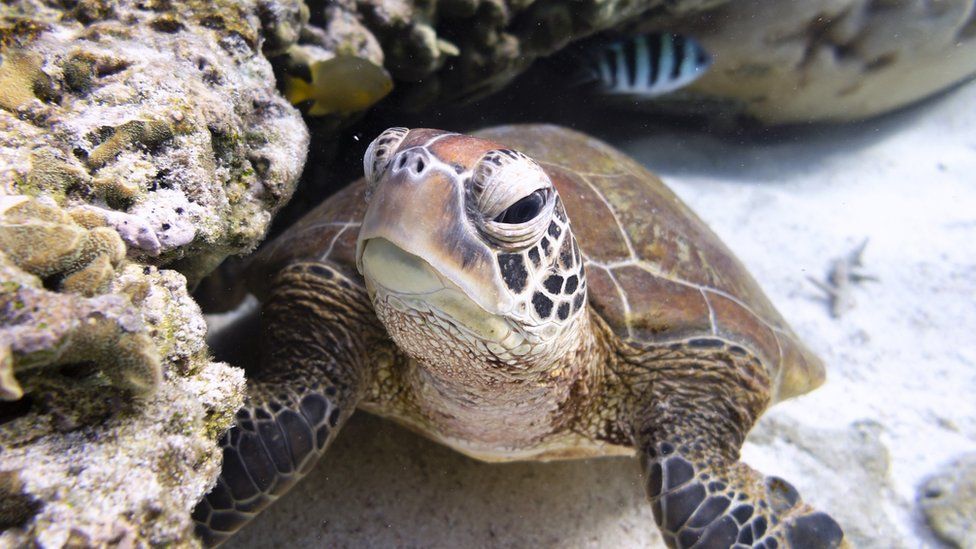
1. High Seas Treaty: Possibly the Most Important Conservation Story in a Decade
About this story: 45% of our planet is open ocean. This important treaty means that this vast and critical area is no longer the wild wild west. We will now have international oversight, and global consensus will be required to decide how we should, or should not, harvest all ocean resources therein.
Every week, I compile the “Ocean Week in Review” stories, but this week was very different. The vast number of media publications, from all corners of the planet, was remarkable. Staggering.
The High Seas Treaty aims to help place 45% of the world’s seas into protected areas by 2030 to safeguard and recuperate marine nature. The agreement was reached on March 4th, after 38 hours of talks, at United Nations headquarters in New York. The negotiations had been stalled for 10 years over disagreements on funding and fishing rights.
Thank you for your generous gift that will help us continue the production of this weekly, free publication
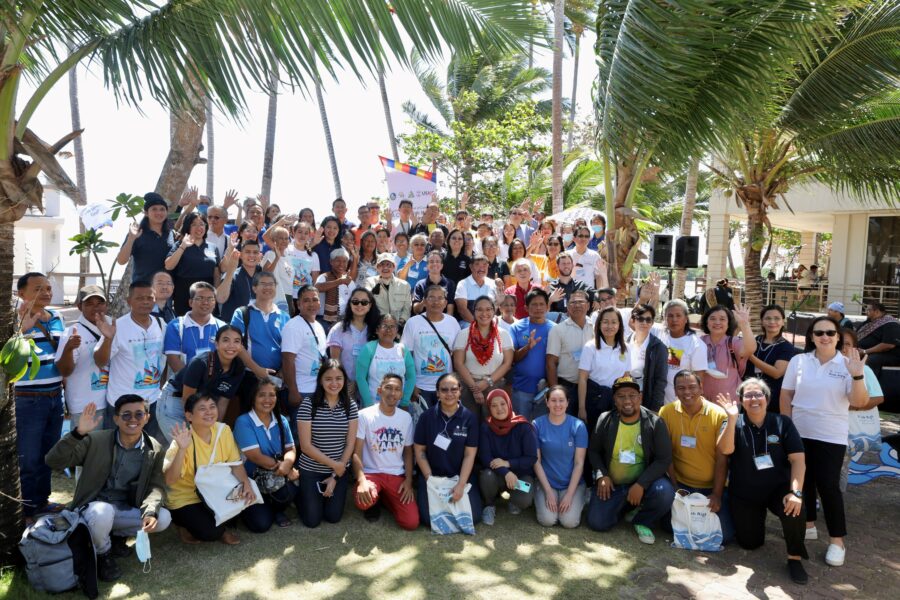
2. U.S. Hosts CSO Summit to Protect Philippine Marine Resources and Biodiversity
On March 3rd, the United States government, in partnership with more than sixty civil society organizations (CSOs), convened the first-ever CSO Summit in Puerto Princesa City, Palawan. The summit aimed to coordinate actions for the conservation and protection of marine biodiversity in the coastal areas of Northern Luzon, Mindoro, and Palawan that face the South China Sea.
The CSO Summit was organized as a follow-up to the visit of U.S. Vice President Kamala Harris to Palawan in November 2022, where she underscored the importance of the U.S.-Philippines partnership in creating economic opportunities and protecting coastal ecosystems throughout the region.
Currently, USAID is implementing three biodiversity conservation projects covering Philippine waters in the South China Sea. These projects have a combined value of PHP 4.3 billion ($78.2 million) in development assistance from the U.S. government.
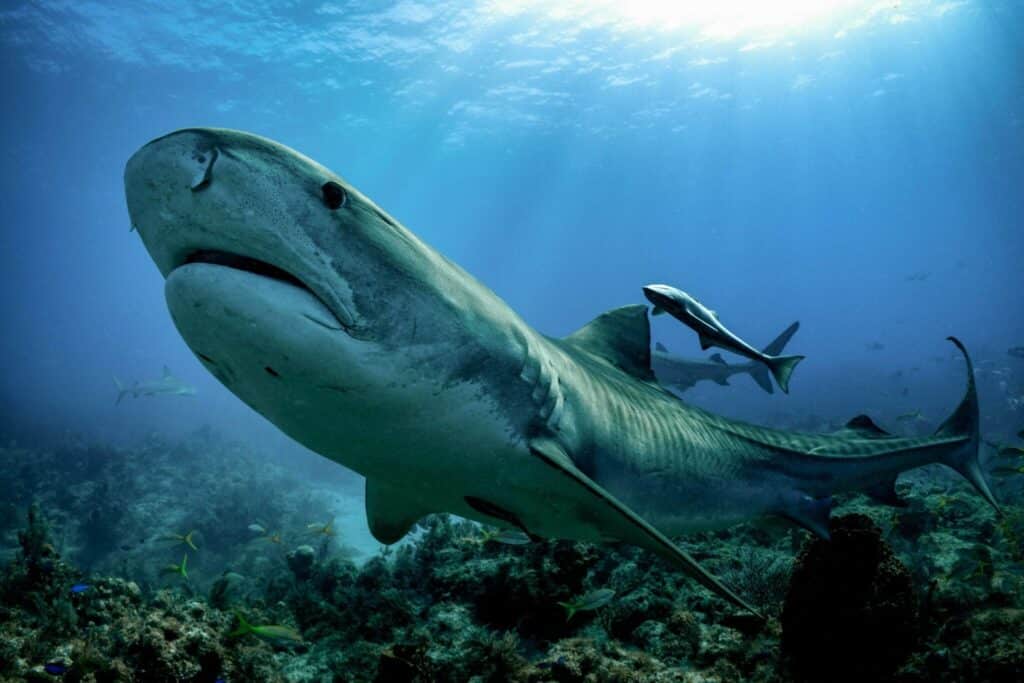
3. Panama Achieves 50% Ocean Protection With Newly Expanded Banco Volcán Marine Protected Area
During the opening ceremony of the 2023 Our Ocean Conference, Laurentino Cortizo, President of Panama, and Milciades Concepción, Minister of Environment, signed a decree to substantially expand the limits of the Banco Volcán Area of Managed Resources (AMR). The expansion aims to further protect and steward important marine ecosystems, endangered flora and fauna, and significant fishing resources found within Panama’s territorial waters in the Caribbean Sea.
The expansion increases the size of the Banco Volcán AMR from approximately 14,200 sq km to over 90,000 sq km, with at least half of the total zone designated as a fully protected marine area where no extractive or environmentally damaging activities will be allowed.
By taking this action, Panama once again demonstrates its commitment to the protection of marine biodiversity and the responsible management of marine resources.
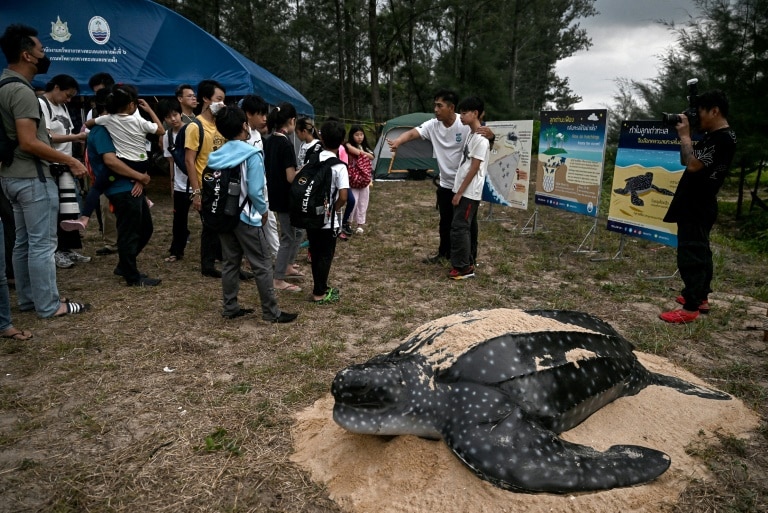
4. Hatching Leatherback Turtles Get Helping Hand on Thai Beach
Leatherbacks, the world’s largest sea turtles weighing up to 500 kilograms, are a rarity in Thailand due to habitat loss, plastic pollution, and egg consumption.
The creatures are globally listed as vulnerable on The International Union for Conservation of Nature Red List, with many sub-populations deemed critically endangered. During the pandemic, the turtles were able to reclaim beaches usually packed with tourists, with marine biologists recording an increase in nests.
Better protections for the creatures have also helped. Thailand banned poaching their eggs in 1982, and locals are now awarded 20,000 baht ($570) for reporting a leatherback nest.
This article chronicles the efforts of a secondary school pupil who is producing a documentary about the turtles under a program run by the Environmental and Social Foundation, an NGO working to educate children about conservation.
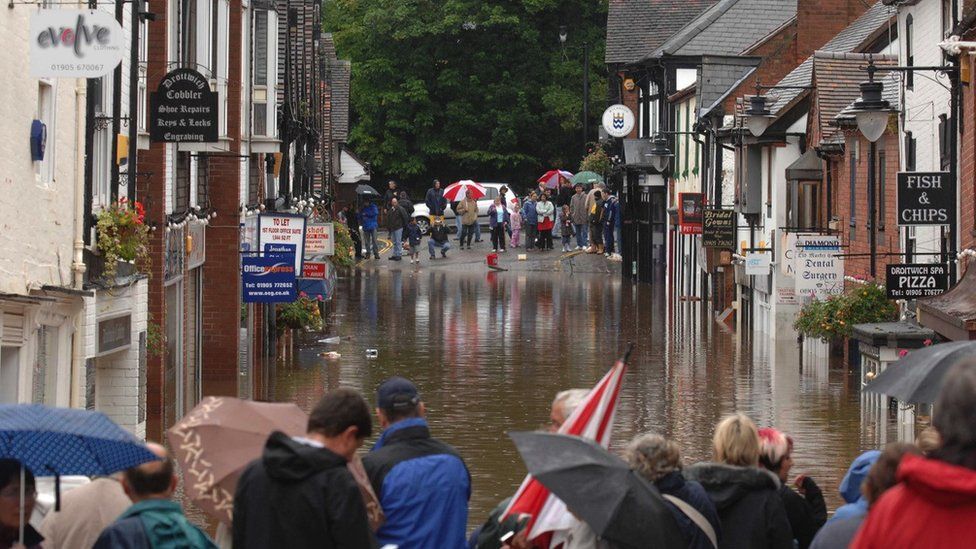
5. New “Future Flood Map” Reveals Potential Impact of Climate Change on Britain
Researchers have created a comprehensive “future flood map” of Britain, which simulates the impact of flooding as climate change continues to escalate.
The map indicates that annual flood damage could increase by more than a fifth in today’s terms over the next century. However, this increase could be prevented if global carbon emissions reduction commitments are fulfilled. Climate change is expected to have a particularly severe impact on vulnerable “hotspots” where homes and businesses are at risk.
The map also highlights areas that will be relatively unaffected. The researchers believe that access to such detailed information is vital in making planning decisions. They suggest that the United Kingdom is ill-prepared to deal with current flood risks, let alone additional risks created by climate change, and hope that their map will help to change this situation.
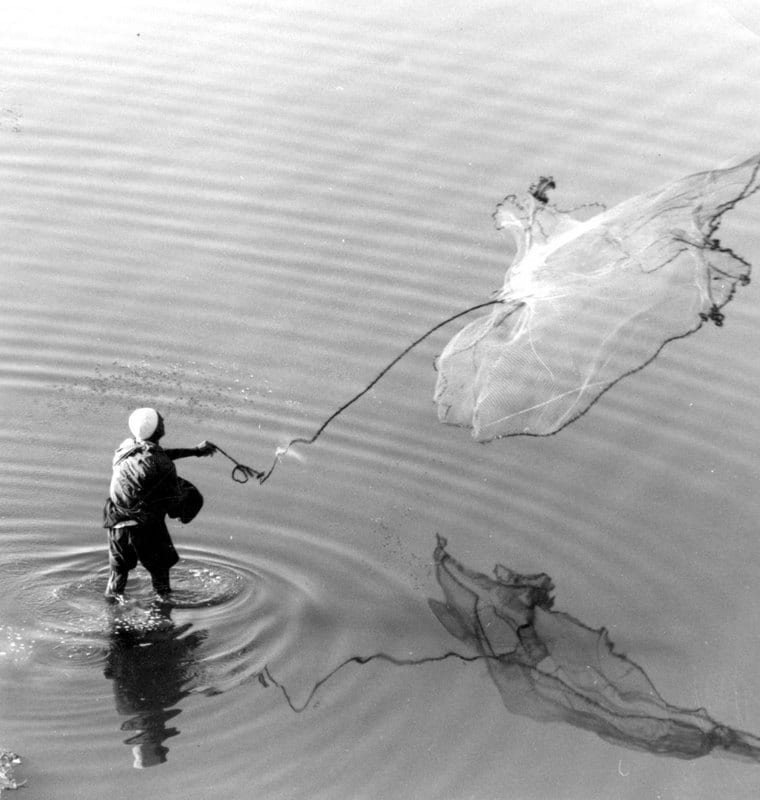
6. Fishers in Yucatan Peninsula Train to Adopt Sustainable Fishing Practices
Coastal fishing cooperatives in Mexico’s Yucatan and Quintana Roo states received training to adopt more sustainable fishing practices aimed at conserving marine life. Fishers learned about responsible fishing methods, how to combat illegal fishing, and ways to reverse the decline of fish populations.
One key area of focus was on fishing refuges, which are designated areas that protect and conserve specific species of fish, allowing them to reproduce and grow. These refuges not only improve fishing activity, but generate social impacts like community involvement and ecotourism projects.
According to the director of Oceana’s Marine Sanctuaries in Mexico, the training serves as an inspiration for fishers in other parts of the country where fishing refuges are an option to conserve marine ecosystems.
In addition to promoting sustainability for the area’s fishing industry, the training is also expected to create more self-employment opportunities for the fishers.
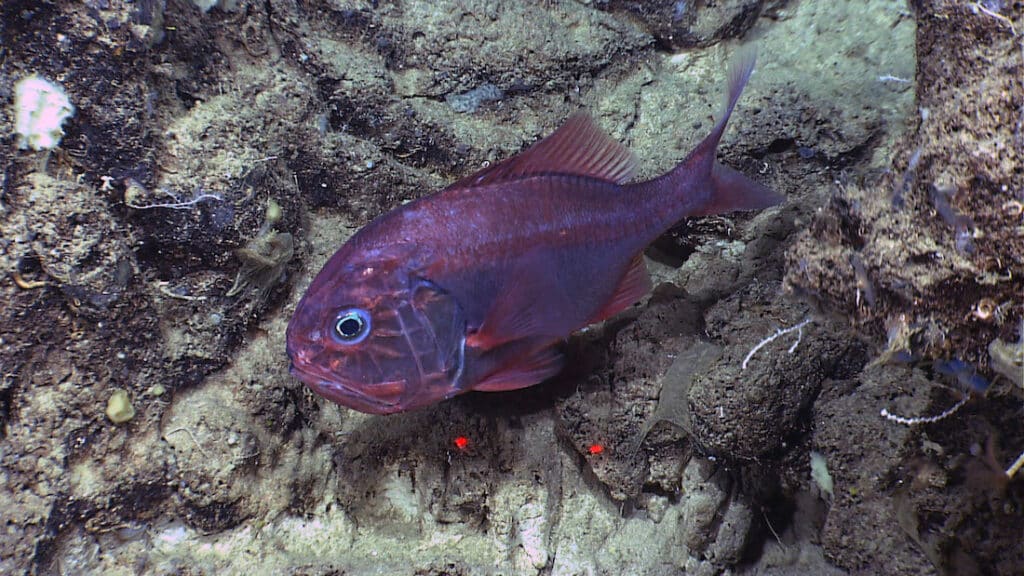
7. Will New Bottom Trawling Rules Do Enough to Protect South Pacific Seamounts?
The South Pacific Regional Fisheries Management Organisation has changed the rules on bottom trawling in seamounts located in international waters of the South Pacific.
This practice involves dragging heavy nets and trawl doors along the seabed, which damages vulnerable marine ecosystems such as sponge fields and coral communities.
Under the new rules proposed by New Zealand and Australia, a minimum of 70% of vulnerable marine ecosystem indicator species or groups of species will be protected, and trawling will be restricted in identified habitats.
The rules will come into effect in 2024. Environmental advocates, who have long called for a ban on bottom trawling on seamounts, have criticized the decision. They blame the Ministry for Primary Industries for failing to introduce tighter restrictions on trawling. The leading industry lobby group, the High Seas Fisheries Group, opposes the rules, arguing that they will produce inconsistent, illogical results.
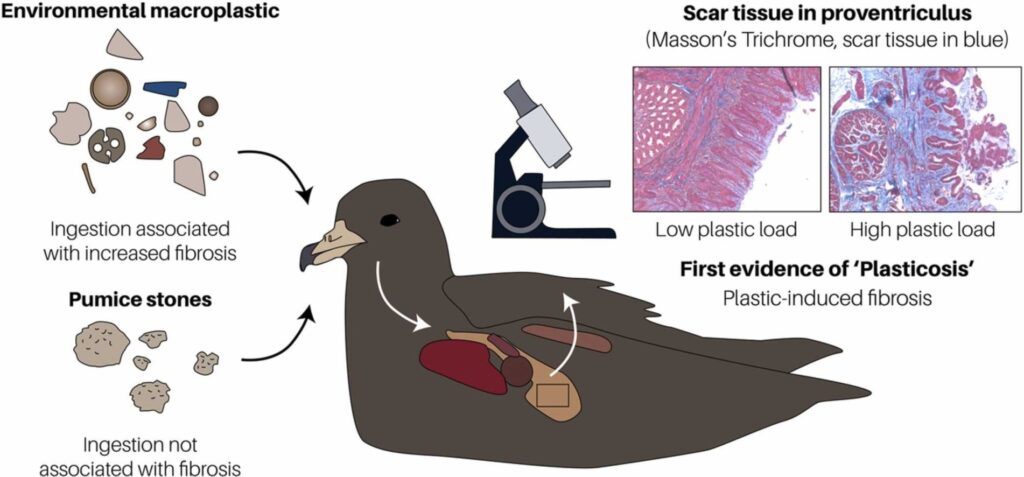
8. How Plastic Pollution is Causing a New Disease in Seabirds: Plasticosis
Scientists have discovered a new disease called plasticosis that affects seabirds who consume plastic in the environment. While many reports have been released on this discovery, in the original study from the Journal of Hazardous Materials, researchers looked at scar tissue in the stomachs of 30 young birds and found that plastic was associated with severe scarring and changes to tissue structure.
As plastic exposure increases, scar tissue forms and swells, impacting growth, digestion, and survival. This disease could make seabirds more susceptible to illness and parasites and impair their ability to absorb some vitamins.
It could also lead to starvation and death in chicks. While plasticosis has only been identified in one species so far, it is believed to be considerably more common due to the extent of human-caused plastic pollution, and it could potentially affect human health in the future.
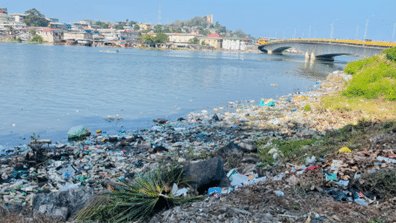
9. Plastic Pollution Threatens Liberia’s Fisheries and Economy
Plastic pollution is a growing concern for Liberia’s fishing industry. The country’s fisheries are crucial to its economy, providing a source of food and livelihood to many communities.
However, the increase of plastic debris, including fishing nets and other gear, has led to the entanglement and death of marine life, disrupting the ocean’s food chain. Local fishers have reported a decline in their catch in recent years, attributing this to plastic pollution.
Members of the public report that the country lacks proper policies, regulations, and waste management systems to address these issues. Community awareness and behavior change efforts are also reportedly low.
To better understand the impact of plastic pollution on Liberia’s fishery resources, more research and monitoring is needed. There is hope that concerted efforts from different stakeholders will help mitigate the challenges caused by plastic pollution and better protect Liberia’s marine ecosystem.
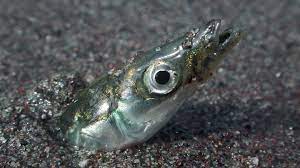
10. Genetic Diversity in Northern Sand Lance: Implications for Marine Conservation
Recent research has shown that marine species often have more genetic diversity than previously thought. Researchers have discovered that the northern sand lance, a key forage fish in ocean ecosystems, is split into two separate populations by the Scotian Shelf off the east coast of Canada.
When fish from each of the two populations mix and reproduce, their offspring are less likely to survive, probably due to a change in water temperature. As a result, the populations on either side of the shelf remain genetically distinct. This discovery highlights the importance of genetic diversity in marine species, particularly in the deep sea, where scientific knowledge on the subject is limited.
Therefore, conservationists agree that creating marine protected areas is crucial to promoting the replenishment of marine populations and maintaining genetic diversity in these species, both within and beyond the protected areas.
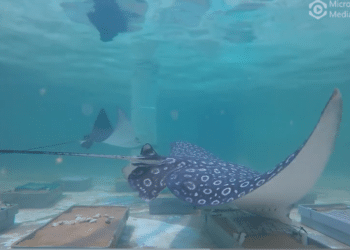
11. Anti-Predator Materials Effectively Protect Hard Clams, Study Finds
Hard clams are cultured by deploying them in submerged bottom leases in the marine environment, where they can grow to market size.
Clammers use anti-predator materials such as woven mesh netting, plastic, or wire covers for protection. However, the effectiveness of these materials against highly mobile predators like rays has not been tested in the laboratory.
Inspired by clammer reports of damaged grow-out gear presumably caused by rays, a group of researchers assessed the ability of white-spotted eagle rays to interact with clams housed within a variety of anti-predator materials.
The results showed that rays could consume clams through bags. However, anti-predator treatments reduced clam mortality four to tenfold when compared to control plots. The double-layered treatments (bags with cover netting) had the lowest clam mortality, demonstrating the effectiveness of this type of protection in limiting ray impacts
.
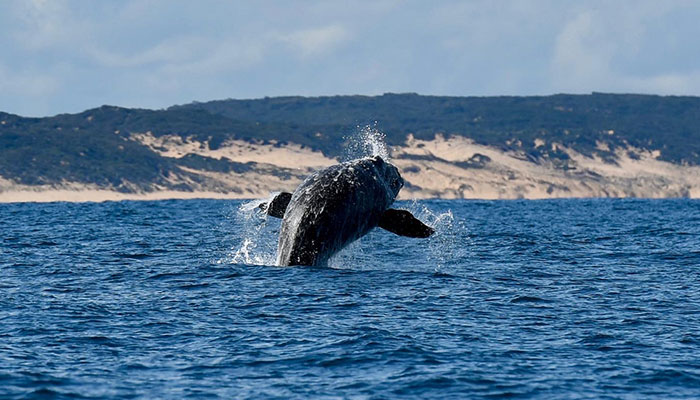
12. Study Shows Whales Spending More Time in the Pacific Ocean
Scientists examined chemicals in the skin of southern right whales to gain new insights into where the animals feed, as well as new information about long-term environmental changes in the Southern Ocean.
According to the study, which was published in the Proceedings of the National Academy of Sciences, foraging grounds have changed over time. They analysed 2614 whale-catch records from 1792 to 1968, and data shows that southern right whale foraging grounds in the mid-latitudes were previously largely stable.
This is no longer the case, though not all populations have responded in the same way. For example, southern right whales from the South Atlantic and southwest Indian Oceans visit Antarctic waters less frequently, probably because of declining krill populations. However, whales continue to migrate south in the southwest Pacific at certain times of the year, indicating that krill are still abundant in that area.
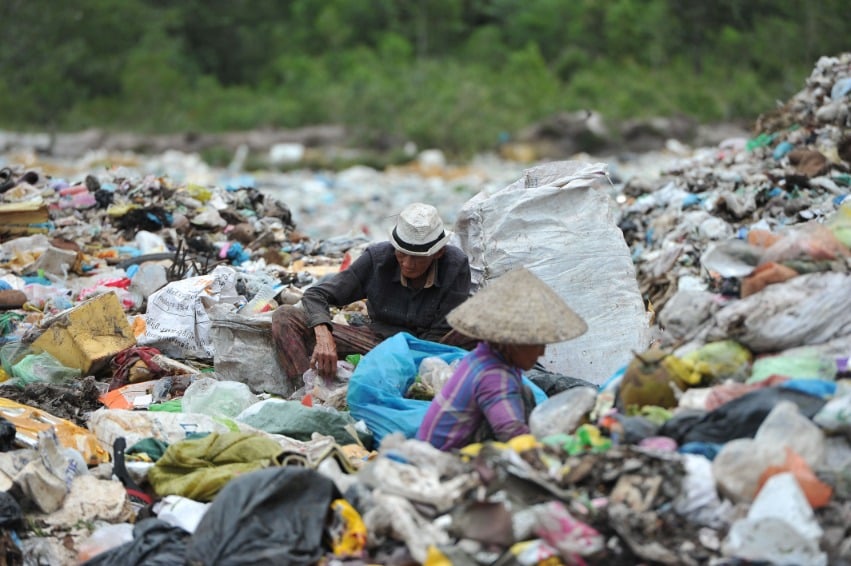
13. Vietnam Takes Action Against Rise in Plastic Pollution
With rapid economic growth and changing urban lifestyles, Vietnam’s plastic pollution is on the rise and shows no signs of slowing down. According to a World Bank report last year, approximately 3.1 million metric tons of plastic waste are discharged on land annually in the country, and about 10 percent of it leaks into the waters. Other data shows that annual plastic usage has increased from 3.8 kilograms per person in 1999 to 63 kilograms in 2017.
As a solution, the Ministry of Justice has proposed an increase in taxes on non-biodegradable plastic bags, packaging, and single-use plastic food containers made from polystyrene foam.
The government is also working on strengthening legal framework interventions and implementing practical measures with a focus on stricter waste management and tighter restrictions on waste imports into the country, as reported by Vietnam News.

14. Plastic Companies Challenge Canada’s Single-Use Plastics Ban
Plastic companies Dow Chemical Canada, Imperial Oil, and Nova Chemicals, backed by the provinces of Alberta and Saskatchewan, went to court on March 7 to overturn Canada’s new single-use plastics ban.
They claim that their products were incorrectly labeled as toxic and that the federal government failed to provide scientific evidence to justify the phased-in ban on the import, manufacture, and sale of plastic items.
They also argue that the government overstepped its jurisdiction in regulating waste management. Oceana Canada reports that approximately four million tonnes of plastic waste are produced annually in Canada.
“If the plastic industry wins this lawsuit, we will continue to see whales washing ashore, turtles drowning, and more plastics in our food, water, and blood,” Oceana campaigner Anthony Merante said.
After three days of hearings, a ruling is expected in the coming months.
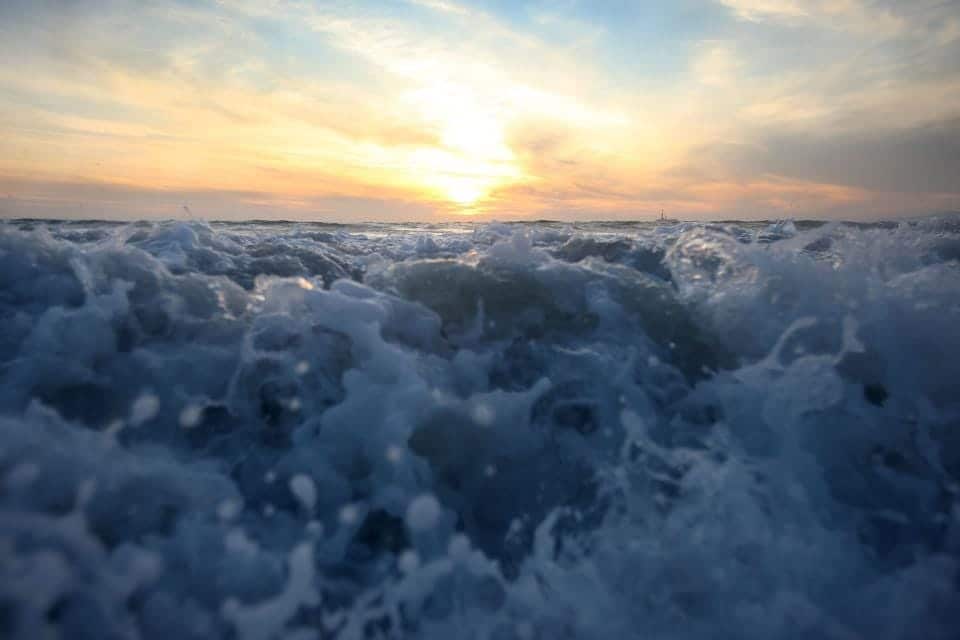
15. New Initiative Aims to Invest in Sustainable Ocean Management
Investment in ocean conservation lags far behind other nature-based climate solutions, despite the fact that oceans are much more than a mysterious watery expanse and a source of food – they are essential to life on earth. Last year, funding for ocean conservation represented just 9% of financial flows into nature-based solutions.
To tackle the issue of underinvestment in ocean tech and sustainable ocean management, the Blue Action Accelerator has set up a $10 million funding pot.
This initiative combines investment with vital living lab capabilities and provides access to jurisdictions in Miami and the Bahamas as part of a network of testing grounds to support technologies that can bring change to ocean health and marine life. The accelerator offers early-stage investment, operating support, and a streamlined route to a global network of maritime and coastal test grounds.




